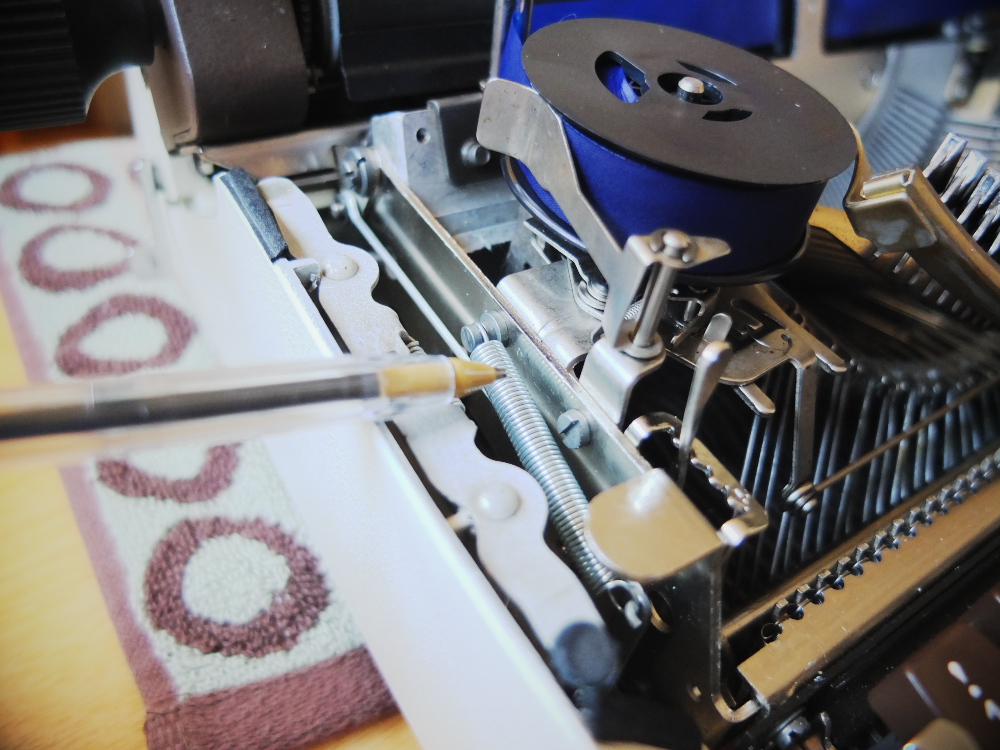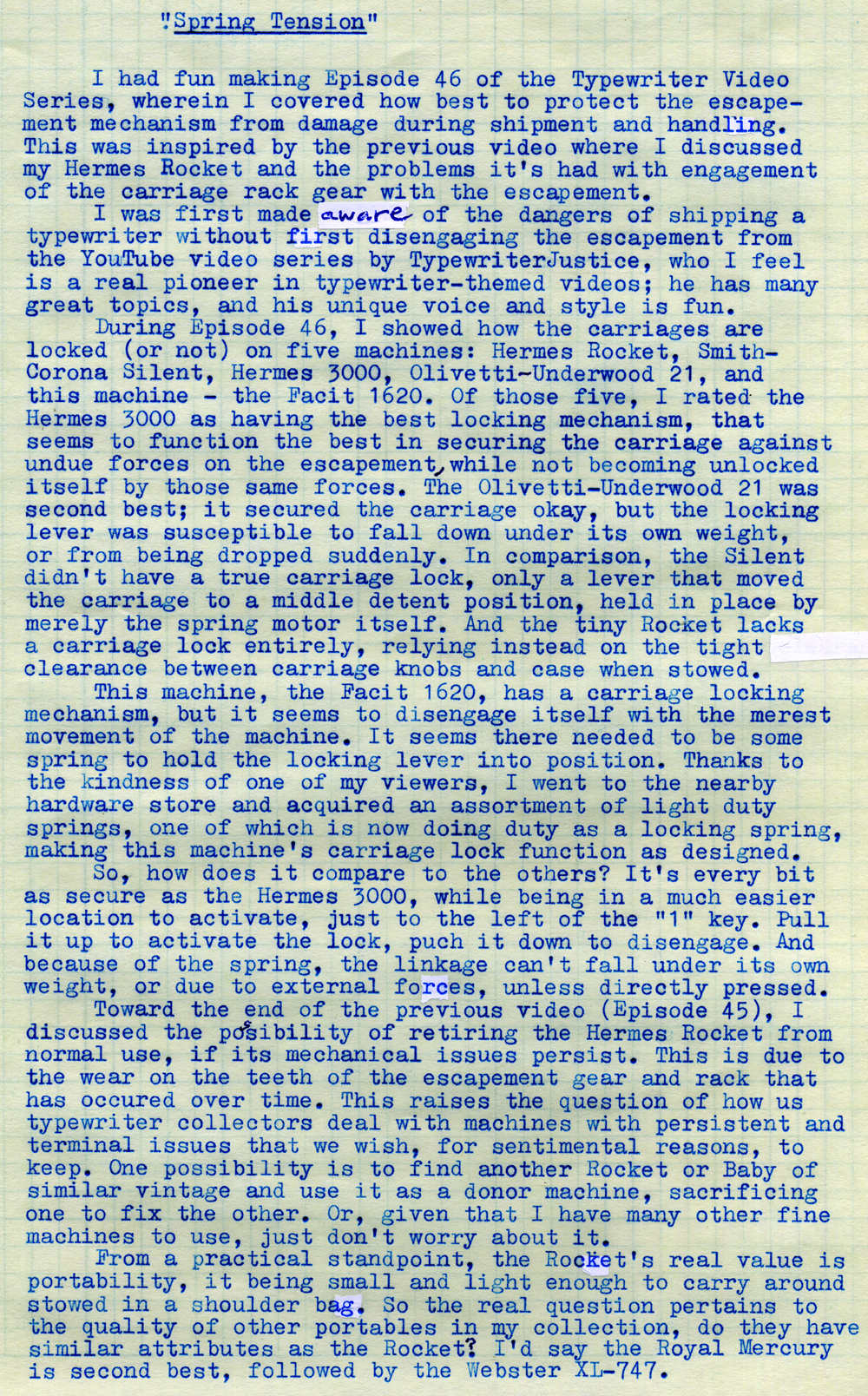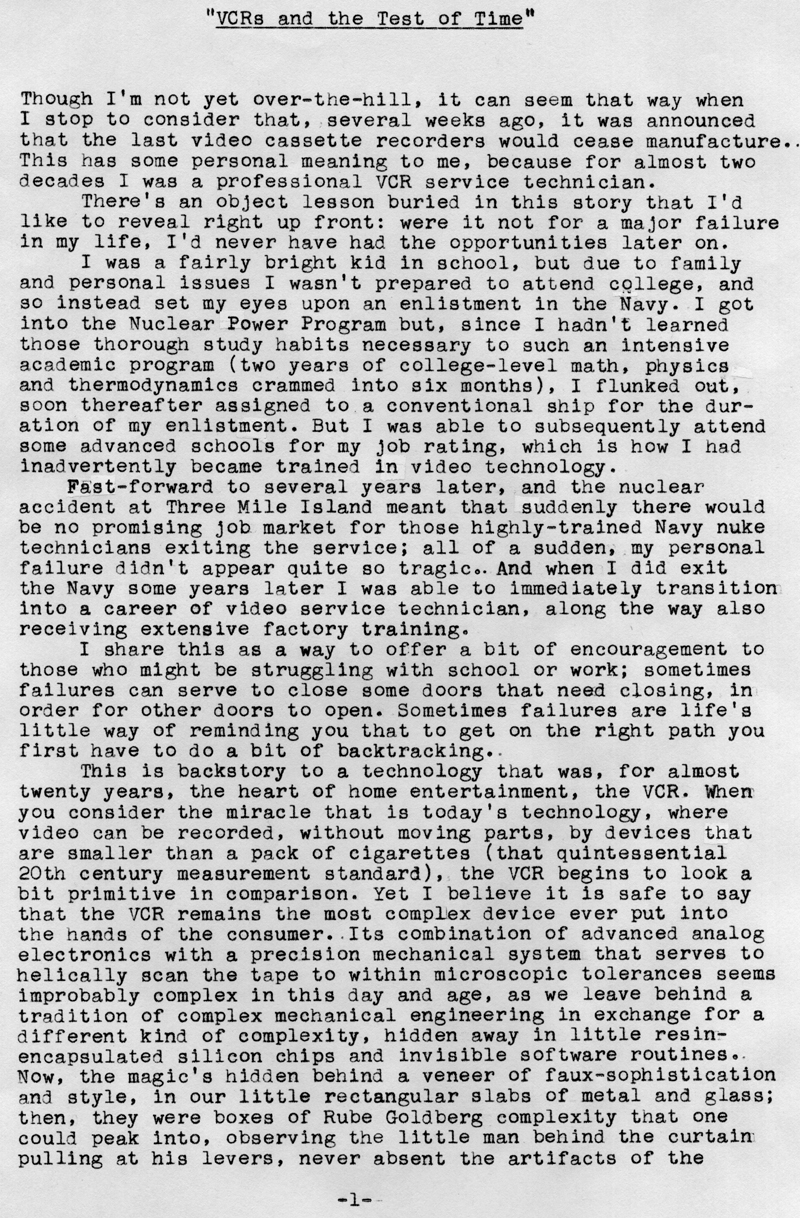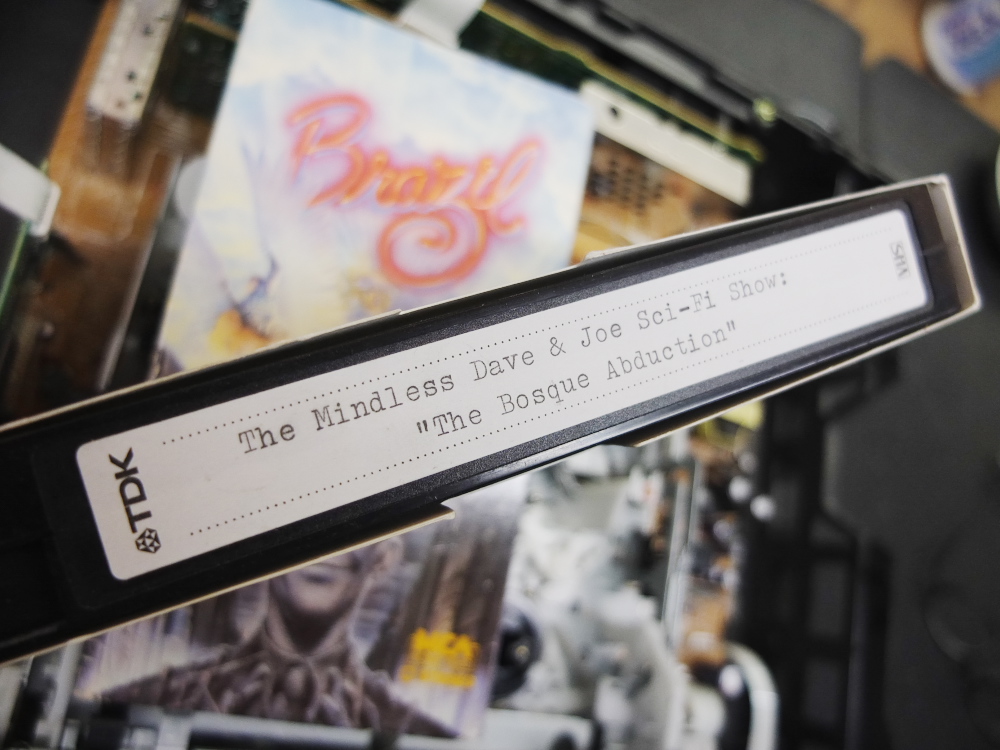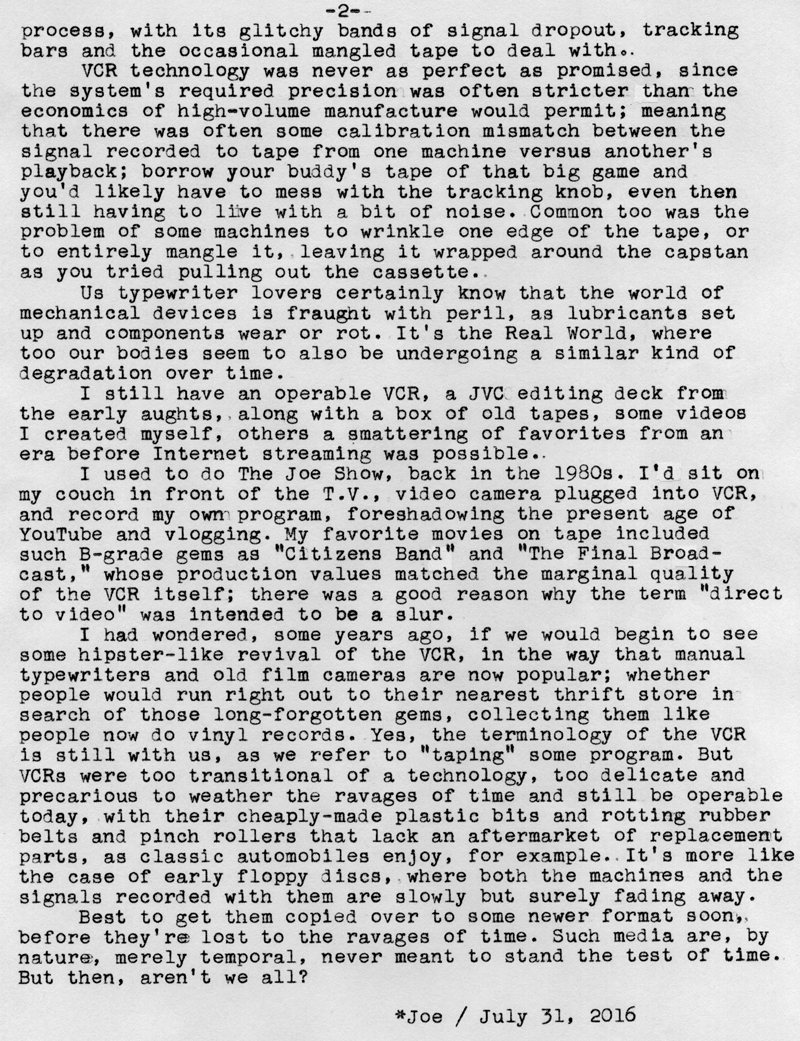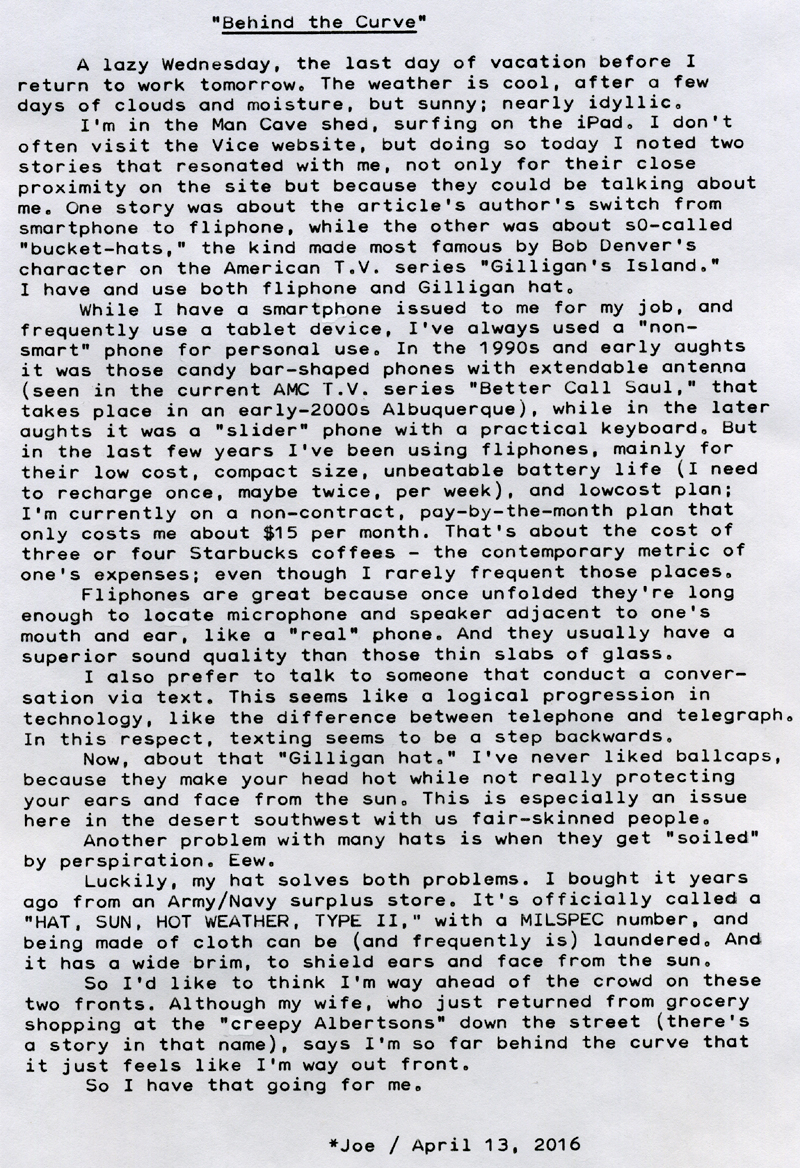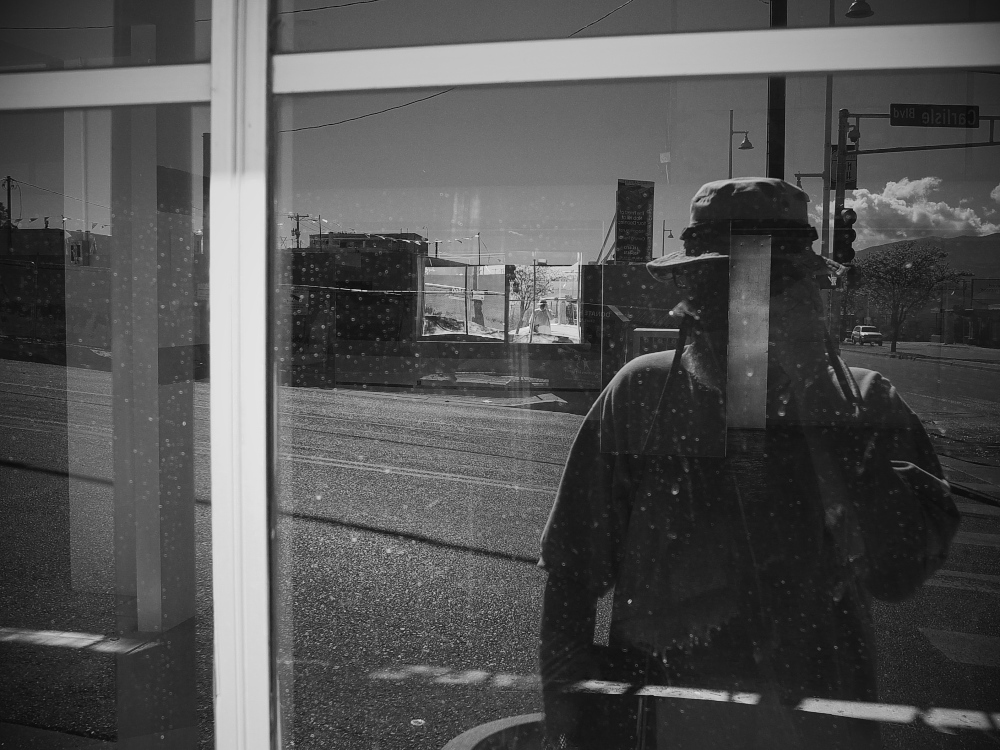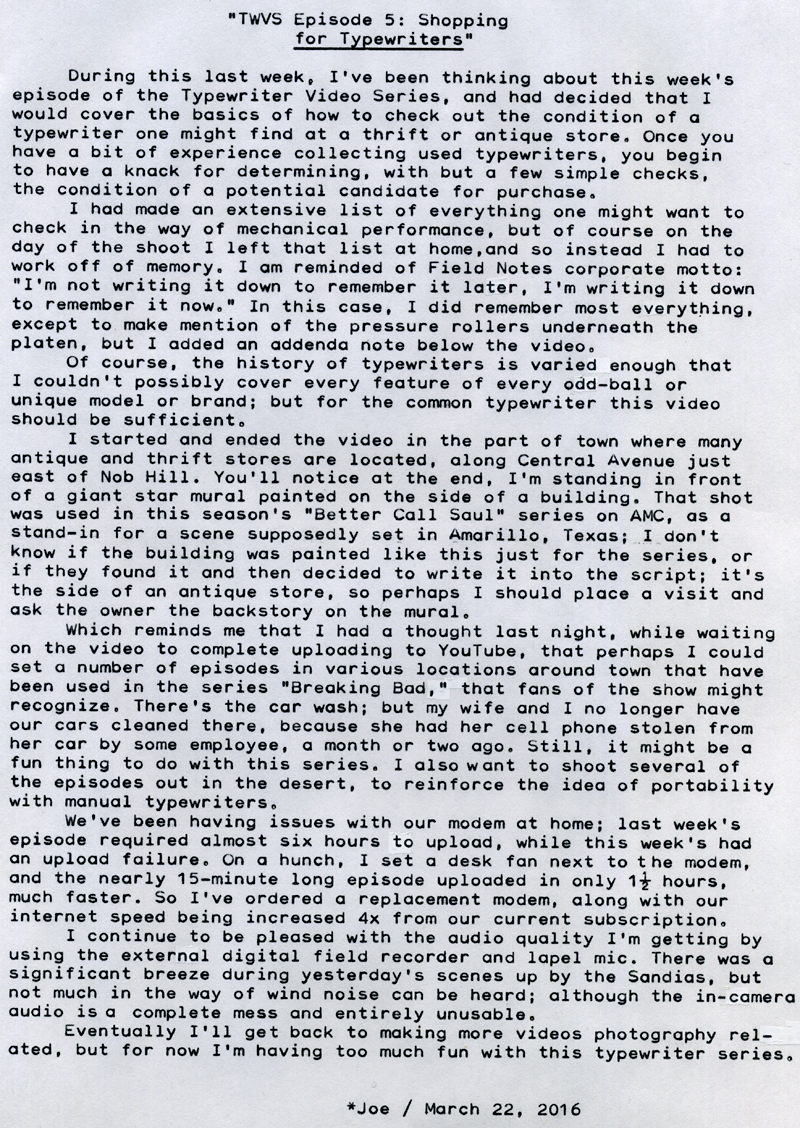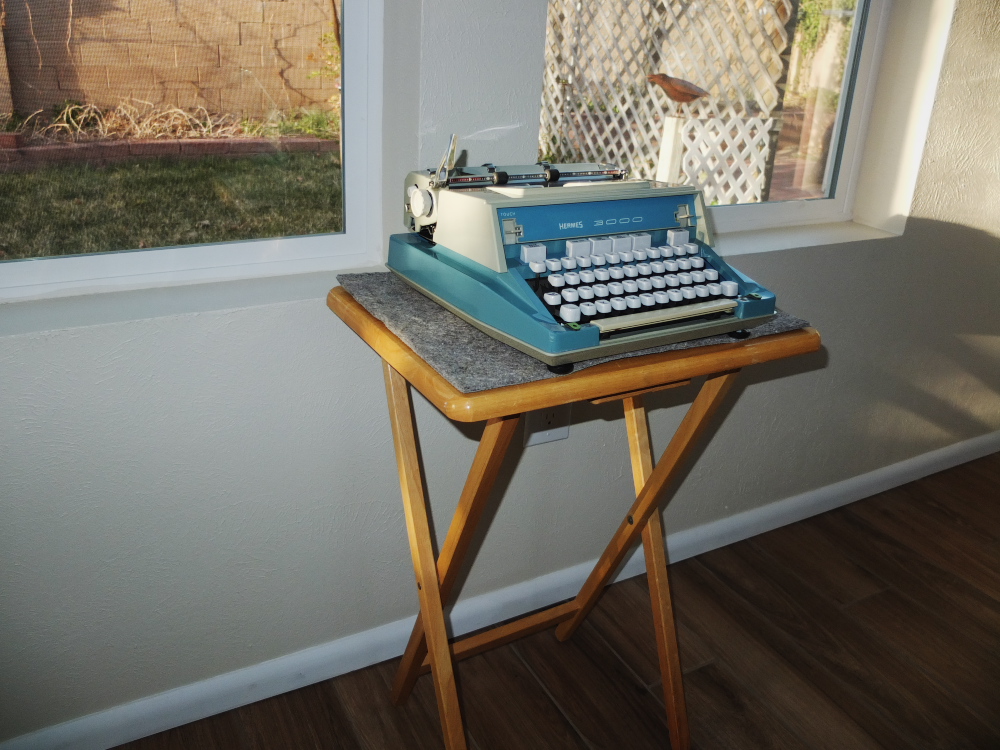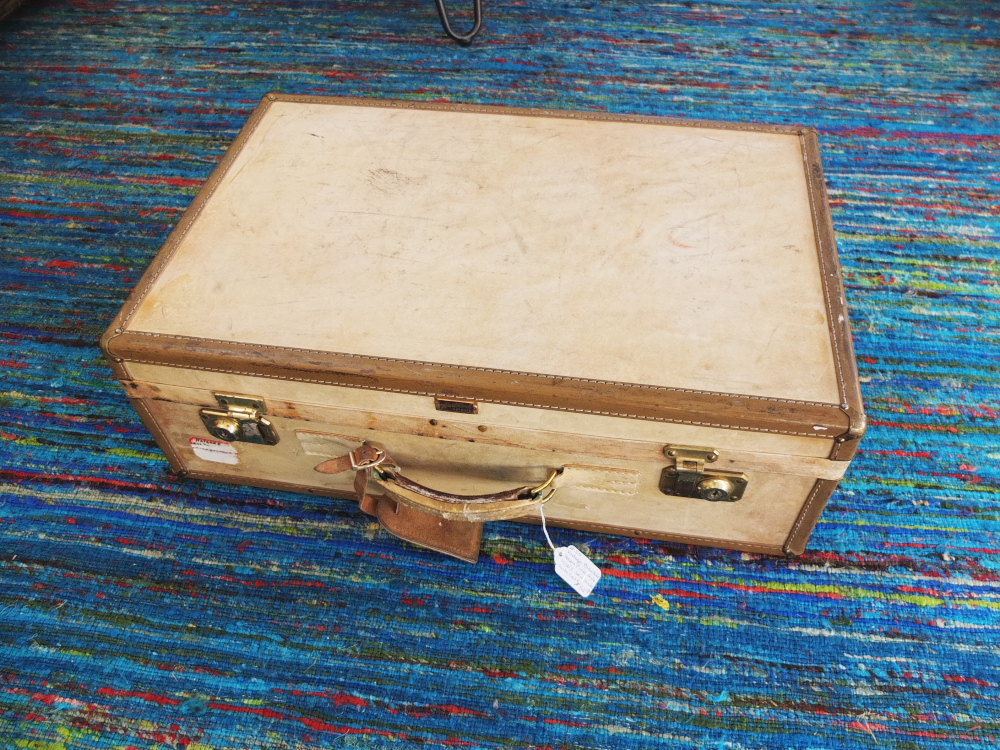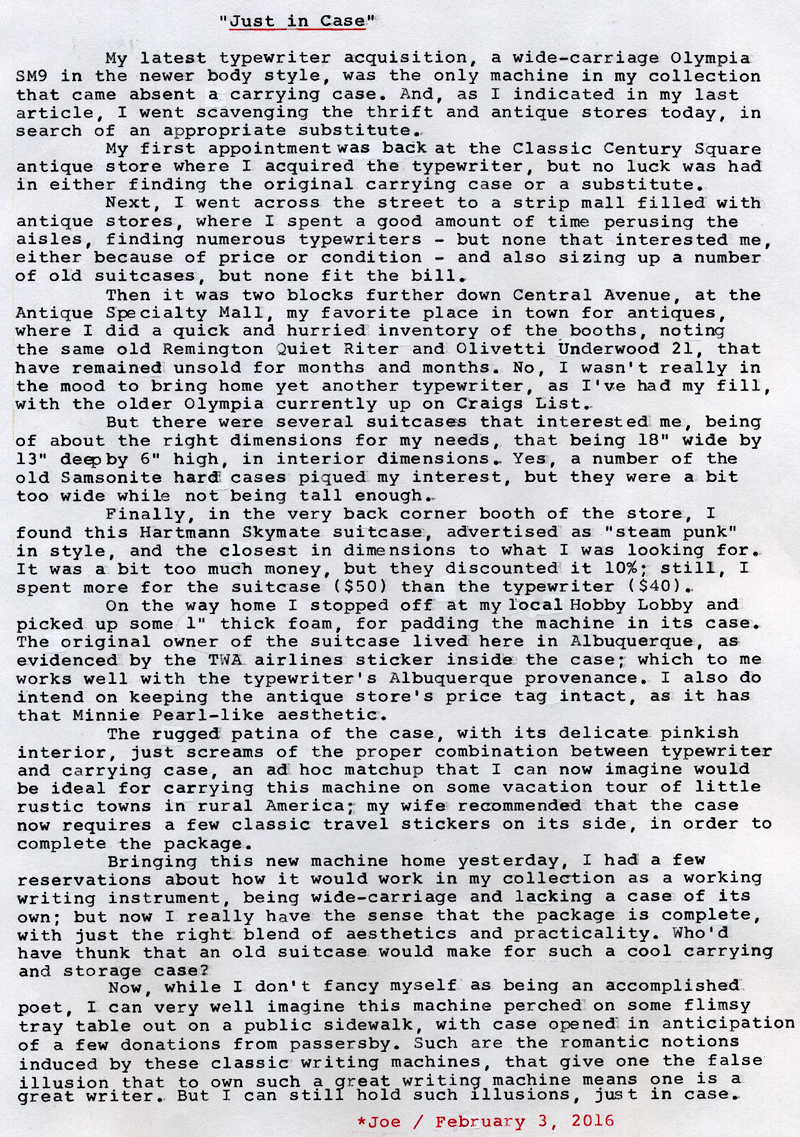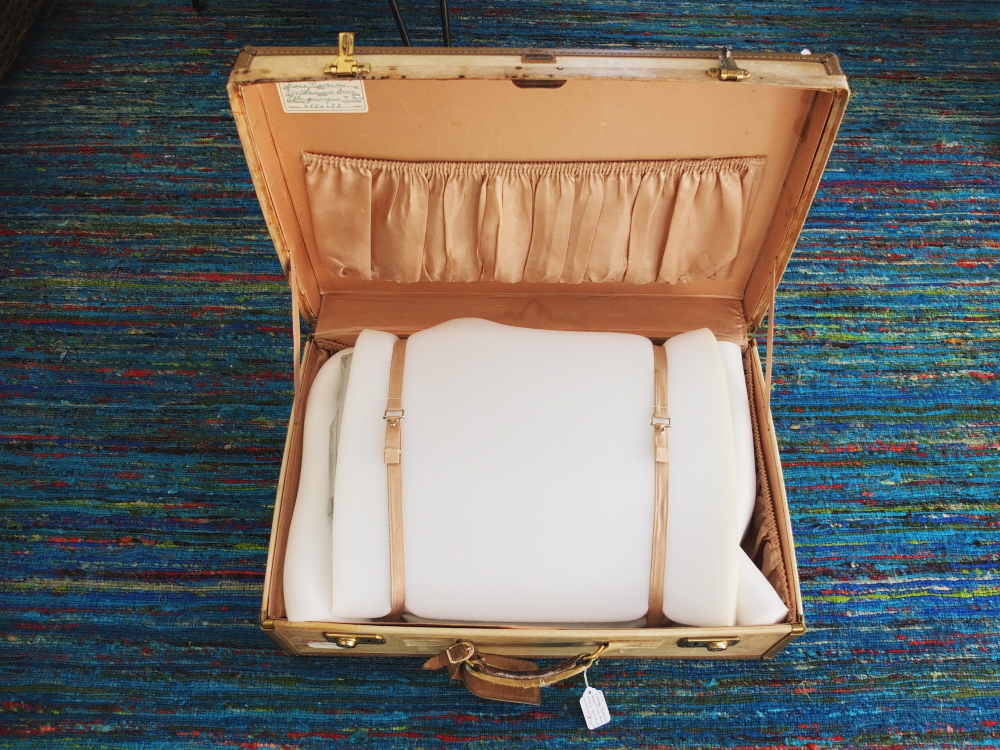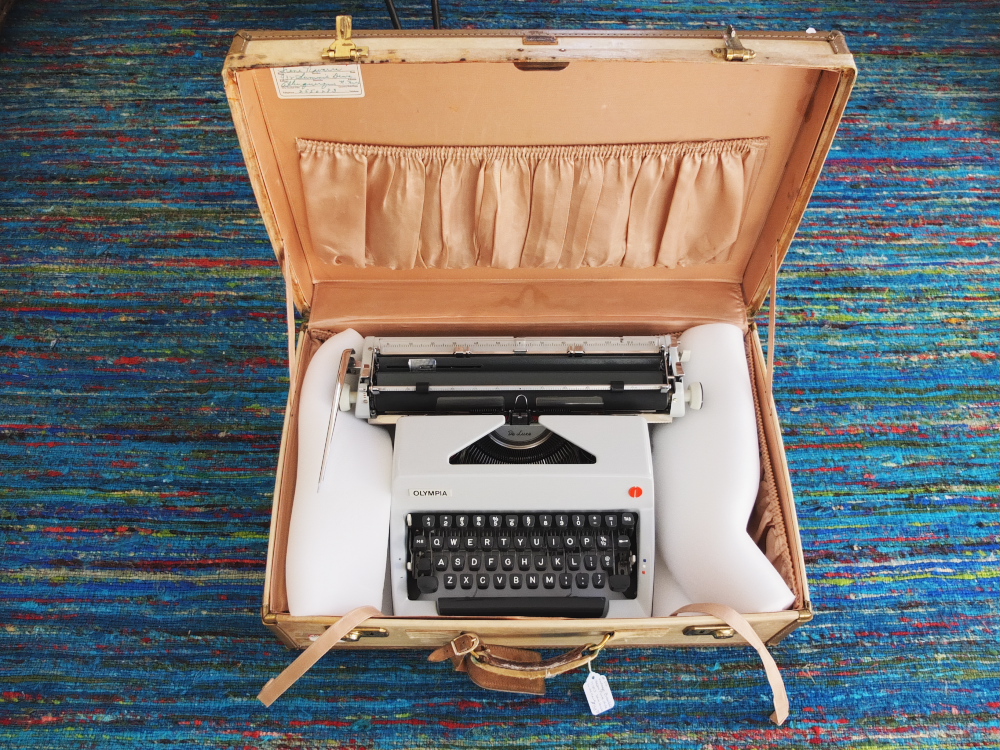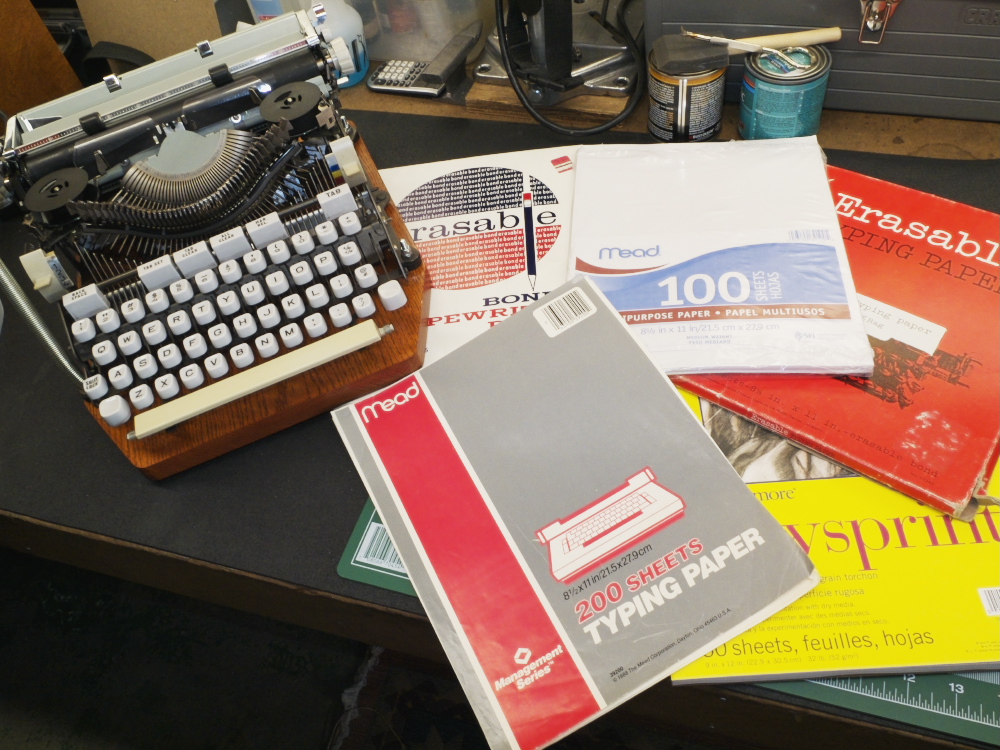
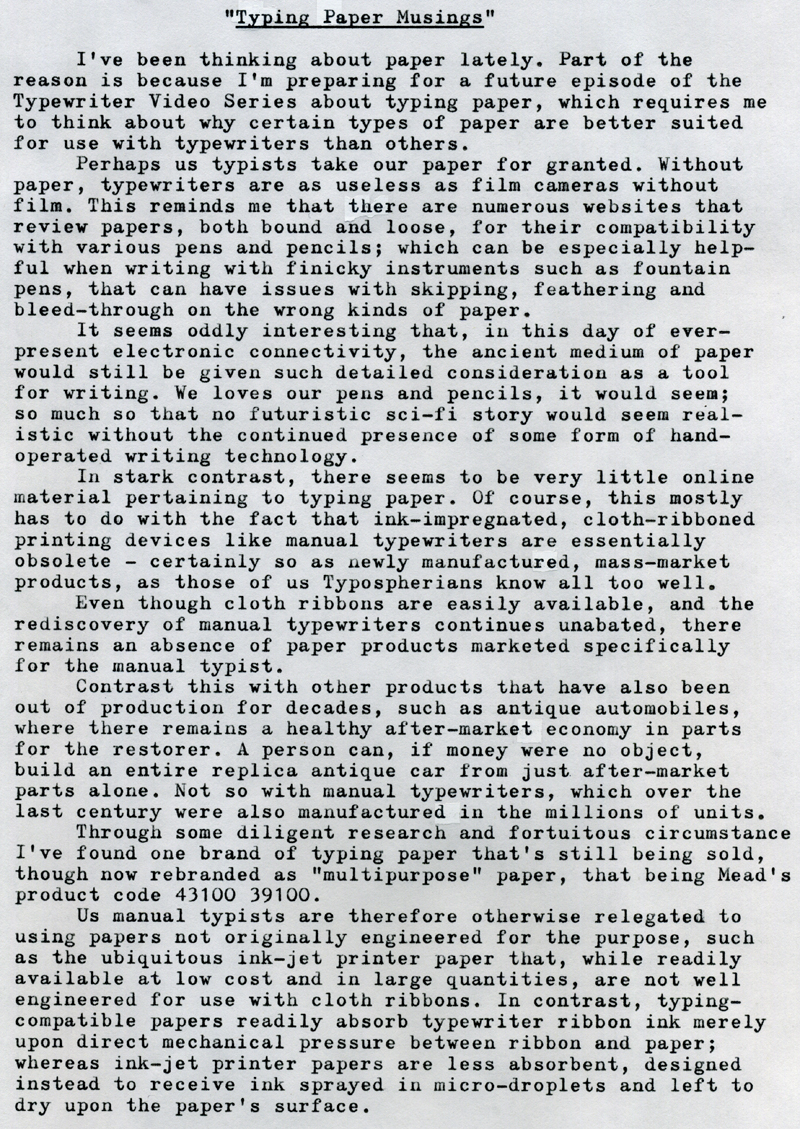
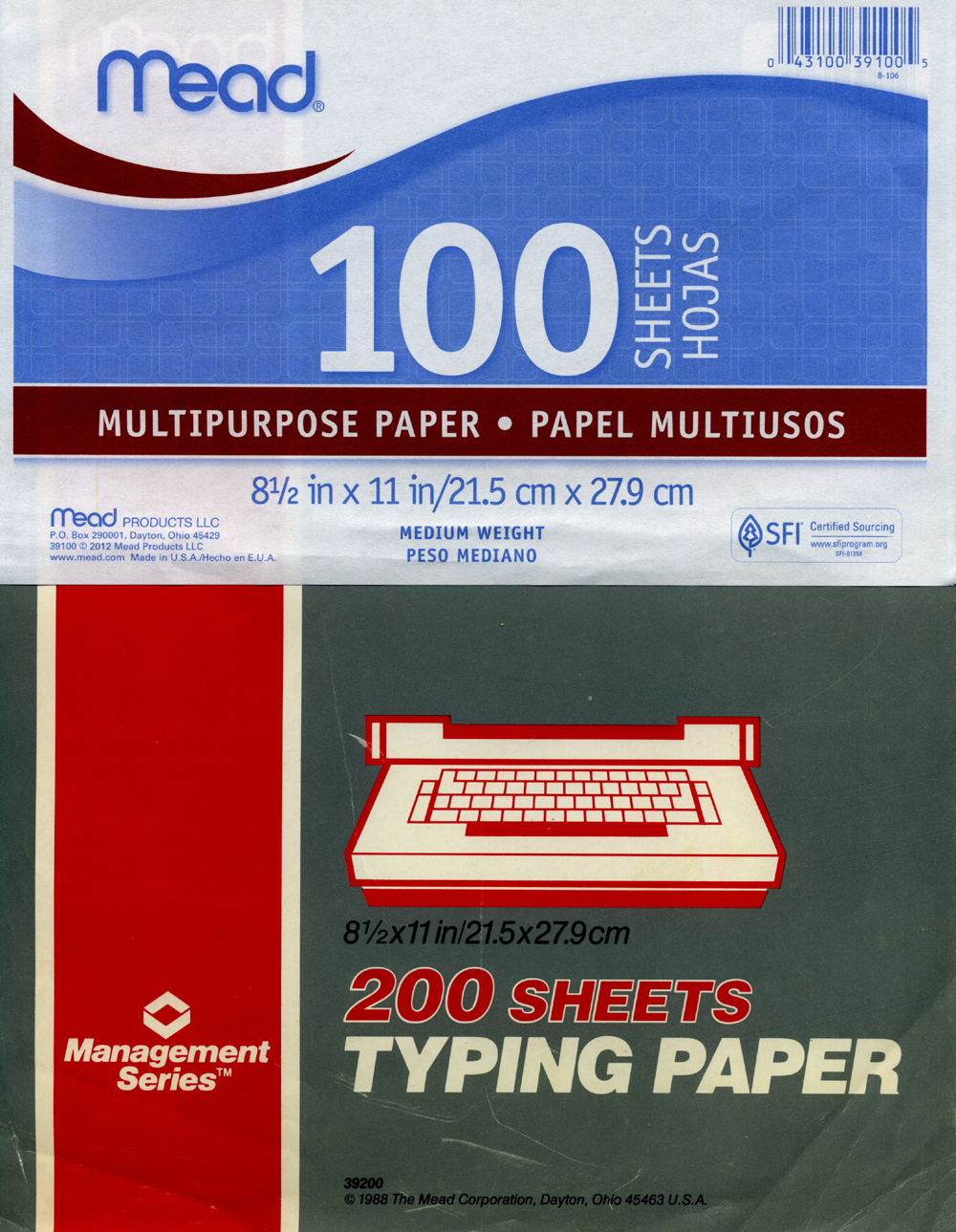
 Post-Script:
Post-Script: I'm certain that most every contemporary user of manual typewriters has some favored kind of paper, and can brag about its specific qualities. But until you've found, as I have, a pack of legacy-era "genuine" typing paper, in some thrift store perhaps, you don't know that most other kinds of paper pale in comparison. Know too that I'm not referring to "erasable bond" typing paper.
The typing papers I've found receive ribbon ink remarkably well; so well that they can transform an otherwise faint-printing machine into a bold typer - which thus serves to further reinforce my contention that the quality of paper is important to the typing experience.
These papers, while receiving ink so well, do so without being excessively thick or ragged. They appear thin and crisp, and thus roll through a typewriter's platen and rollers with ease.
I'm really surprised that quality typing paper has not received more attention from manufacturers looking for new niche markets to exploit. Imagine if film photographers enjoyed fondling their mechanical cameras but could care less what kind of film they used (read some posting on
Rangefinder Forum, for example, and you'll see that photographers are a picky bunch). Most typists seem a bit more laid back, as if "whatever paper I find is okay with me" were the mantra.
Perhaps this serves as proof that typewriters are not as much a hipster affectation as we might expect, for if they were, we'd see a plethora of artisan-crafted typing papers to choose from. And that wouldn't be such a bad thing.
In the second photo, I've scanned the new Mead multipurpose paper, while below it is the lower half of the legacy Mead typing paper. Note the UPC code for both products differ only by one digit. If you search online for the new paper, most websites list results whose photos are actually of the older paper's label, which indicates to me that the product has only recently been re-branded.
The first page of the piece was typed using the newer Mead paper, while the second page was typed using the Strathmore Newsprint art paper. It's a bit more gray than the scan might indicate, but seems to take ribbon ink rather well; and its toothiness seems to actually keep the type slugs clean, so it has that going for it. The downsides are the cost, the gray color which makes it difficult to hide any corrections, and the size.
Typecast via Hermes 3000 Nekkid-Riter. The storage box is essentially complete, so I'll post an article next week about it.
Labels: Fujifilm X10, Hermes, Hermes 3000, Nekkid-RIter, typing paper
